Hello dear friends and Hivers ! It's been a long time and I hope you're all doing well. After weeks of hard, tiring work, the pace is gradually easing... But all that 'extra' is likely to be spent setting up in the countryside, maintaining and preparing the garden.
Winter is a good time for that, but I hope we'll have a chance to talk about it again soon !
Today, I wanted to share with you a visit we recently made to one of the larger towns in the area, Mortagne-au-Perche. It's a town that has managed to retain its character and historic architecture, with buildings ranging from the Middle Ages to the Empire style to the modern era.
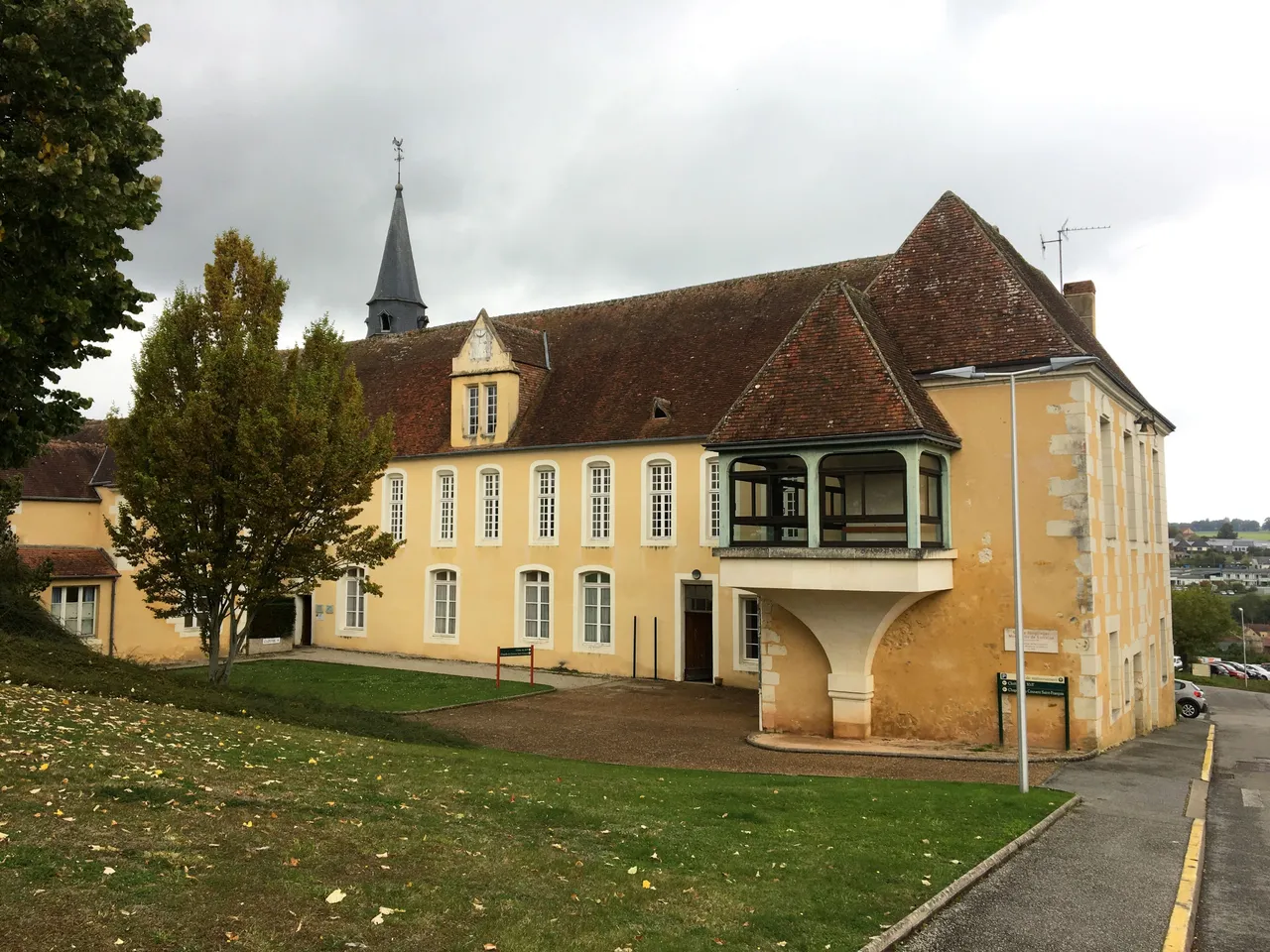
This is the building that houses the cloister and chapel and is now a hospital.
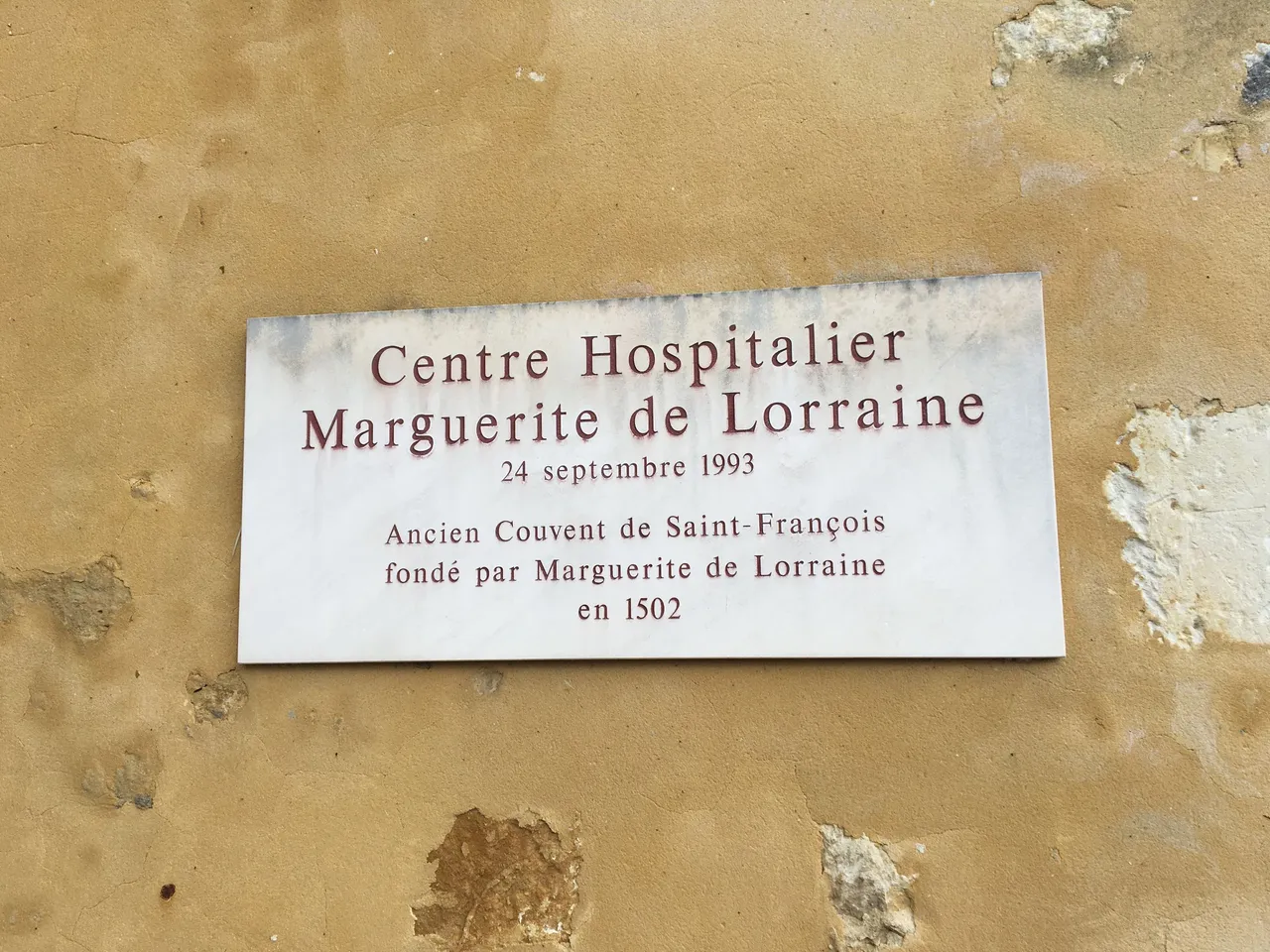
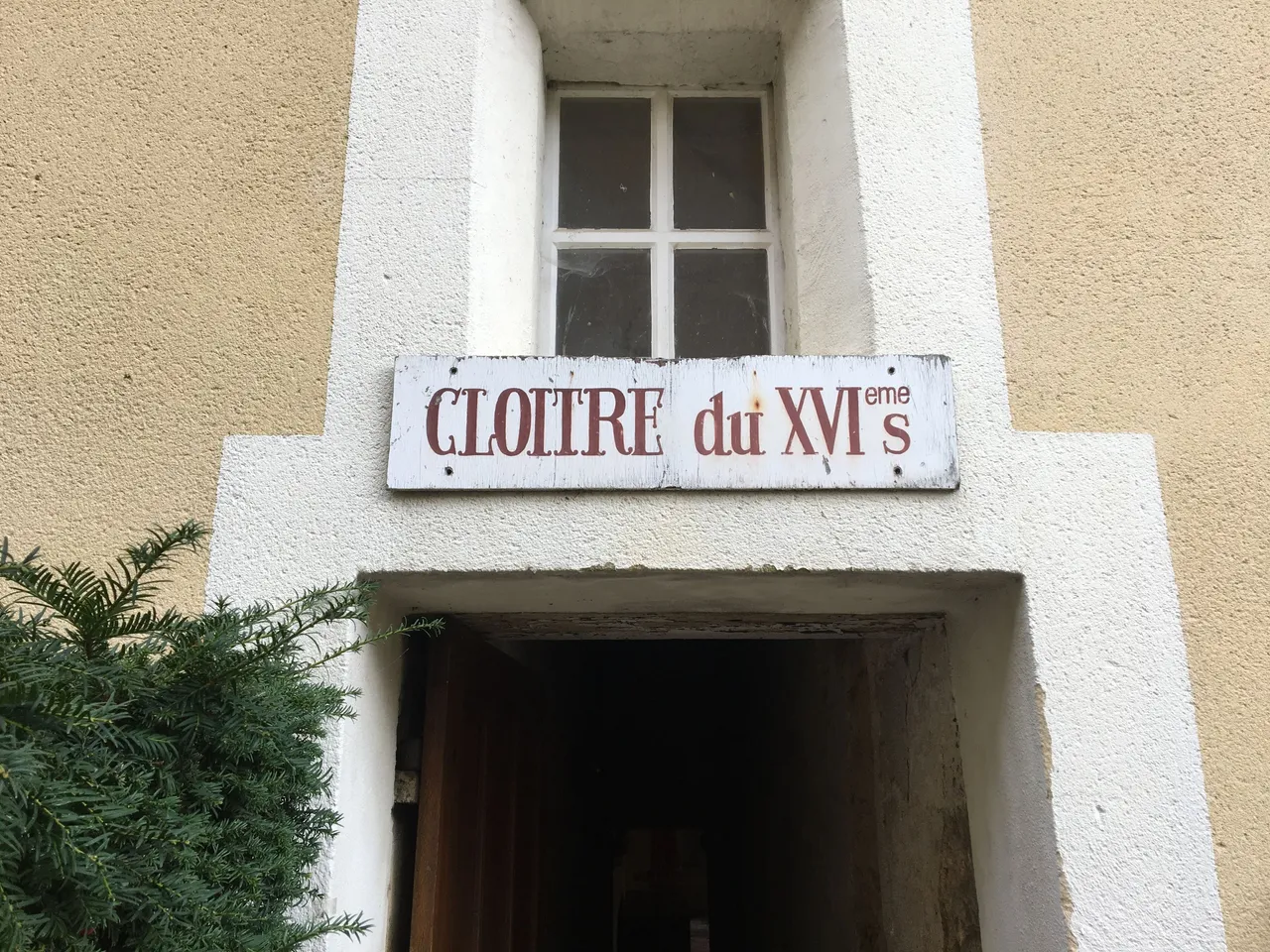
Here we are in front of the entrance...
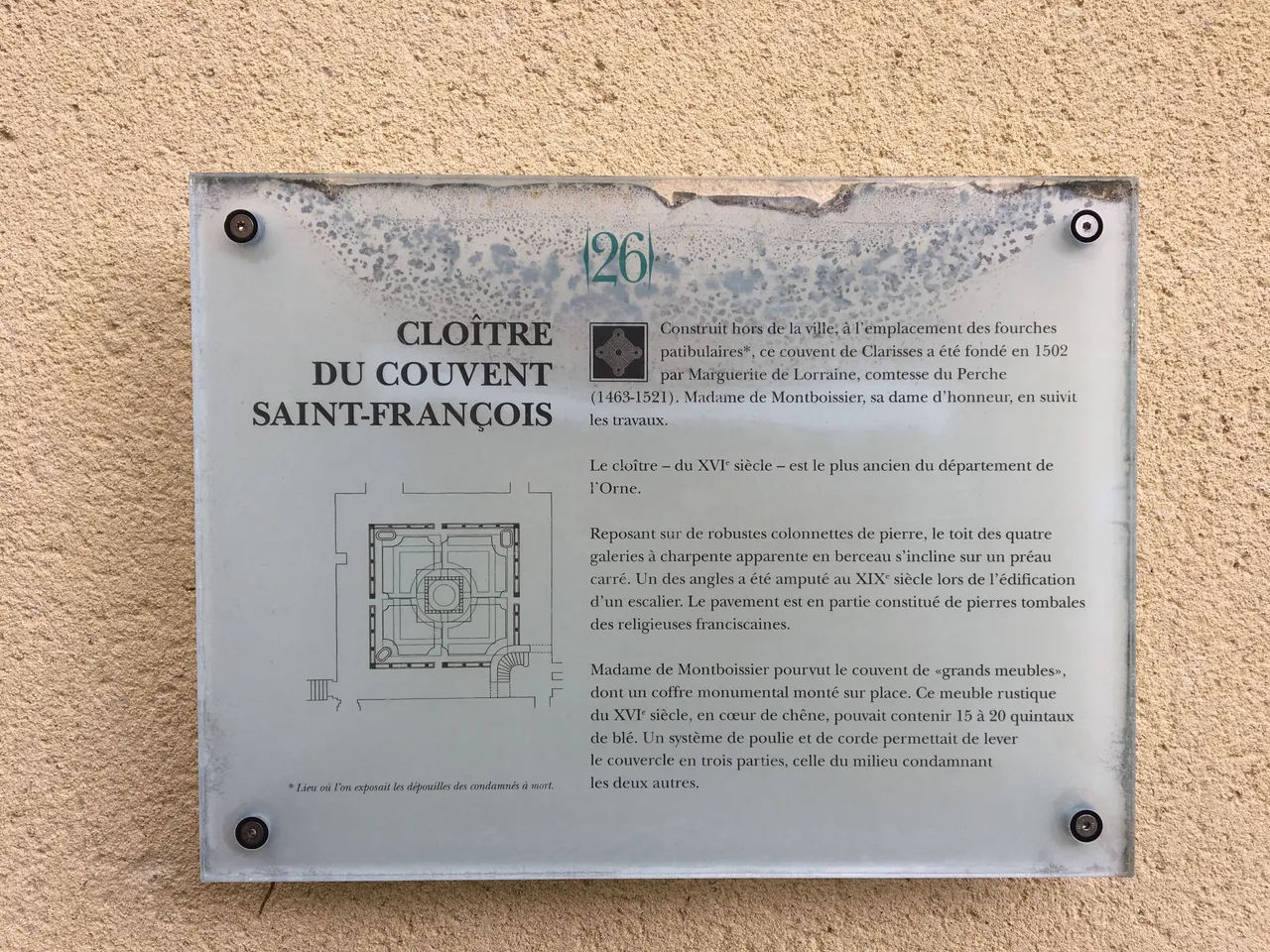

Here's what I found out about the history of the site:
In 1502, Marguerite de Lorraine (1463-1521) decided to build a convent in Mortagne for the Poor Clares. The abbey became a national asset in 1800 and was converted into a hospital.
Today, this unique example in Normandy of a chapel adjoining its cloister is of exceptional architectural and pictorial interest. The chapel and cloister have not undergone any major alterations since the 16th century, and the polychrome decorations in the chapel of St Francis are highly original, giving visitors a sense of calm and interiority.
Source, "Normandie Tourisme"
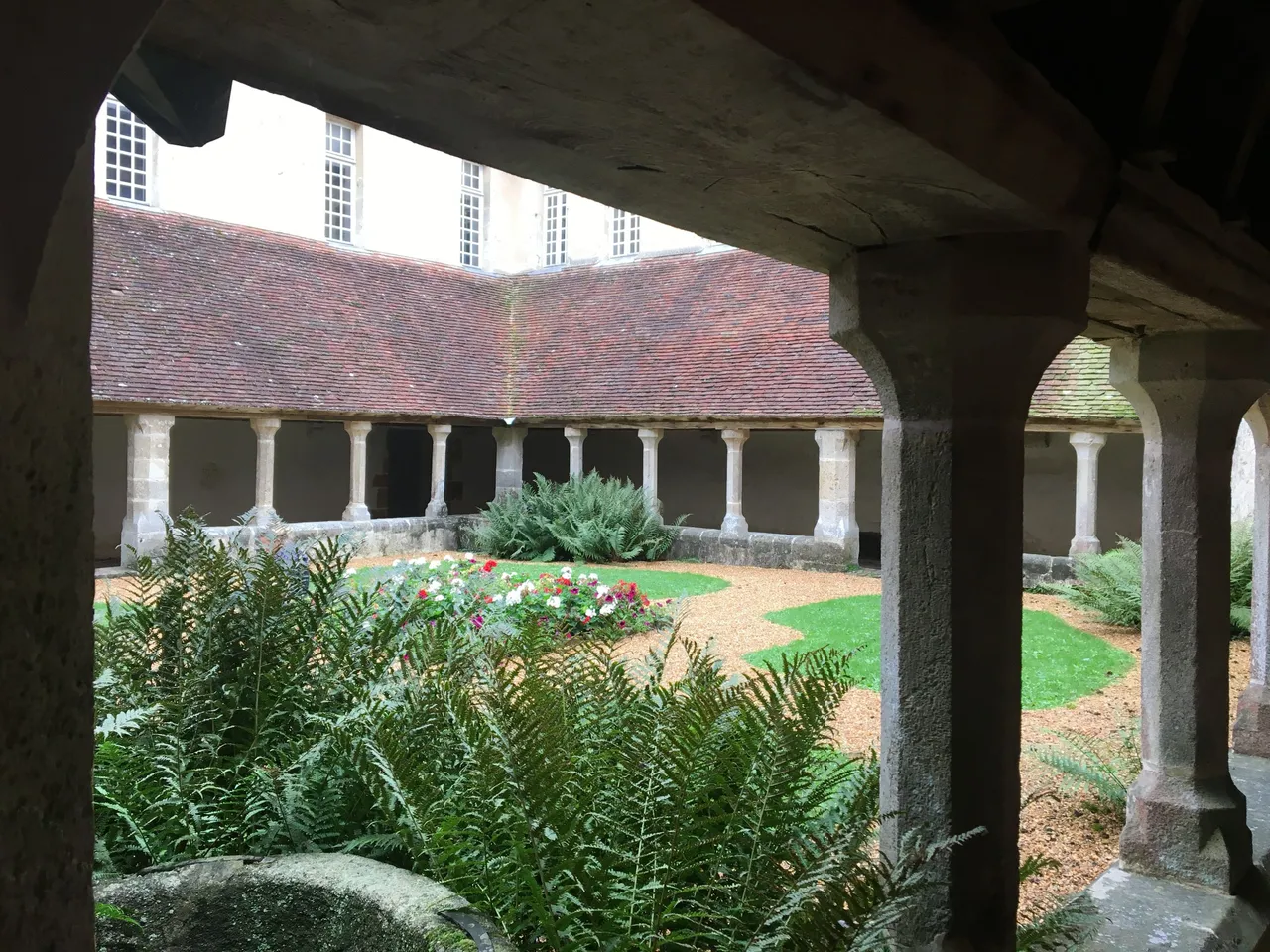
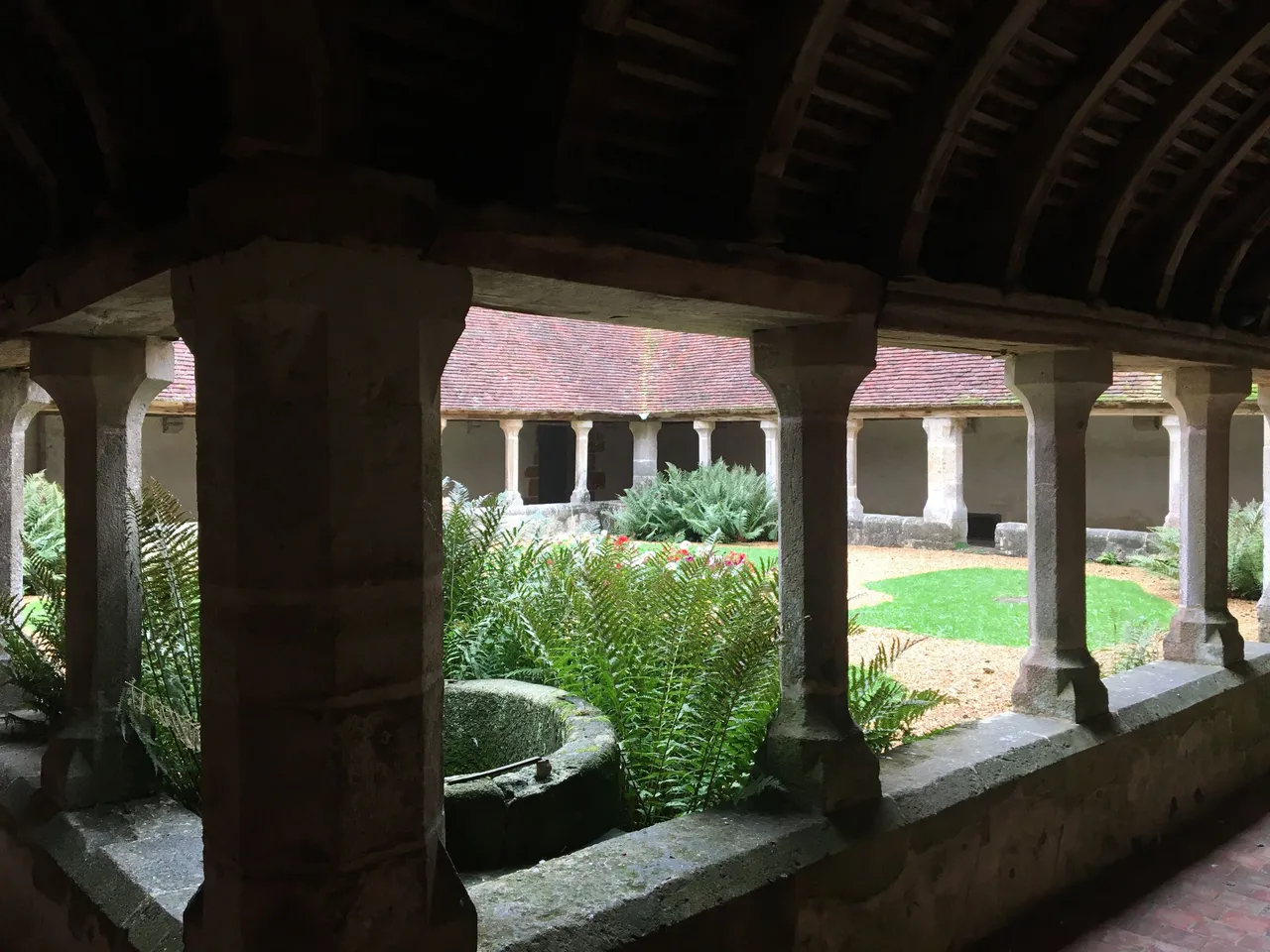
And here is this little cloister, no more than 15 meters square. When we arrived, some of the hospital nurses were taking their break, which is why I wasn't able to see the whole place.
But that didn't stop us enjoying the peace and quiet of the place...
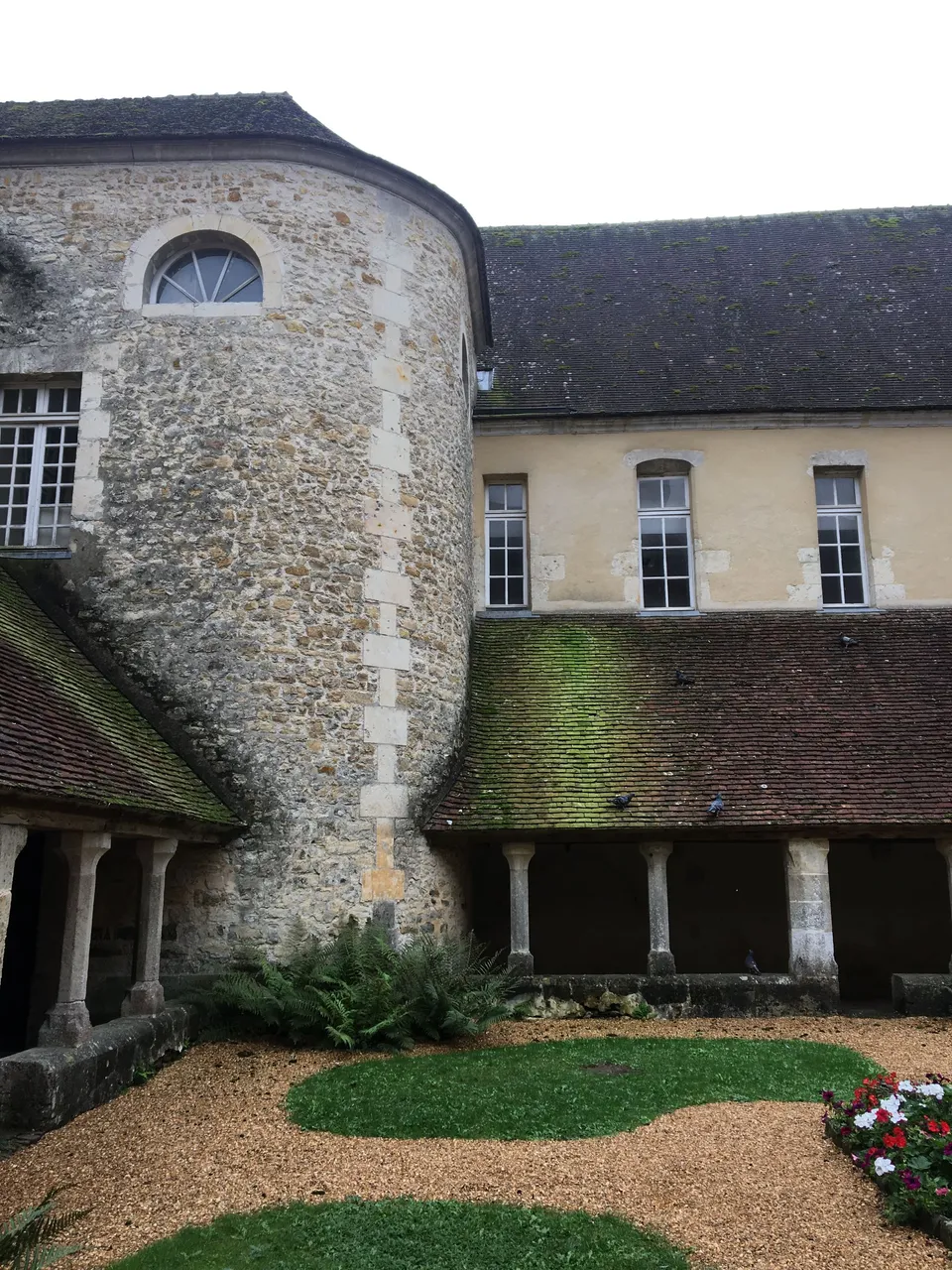

Here, bending over a little to see the buildings overlooking the small courtyard.
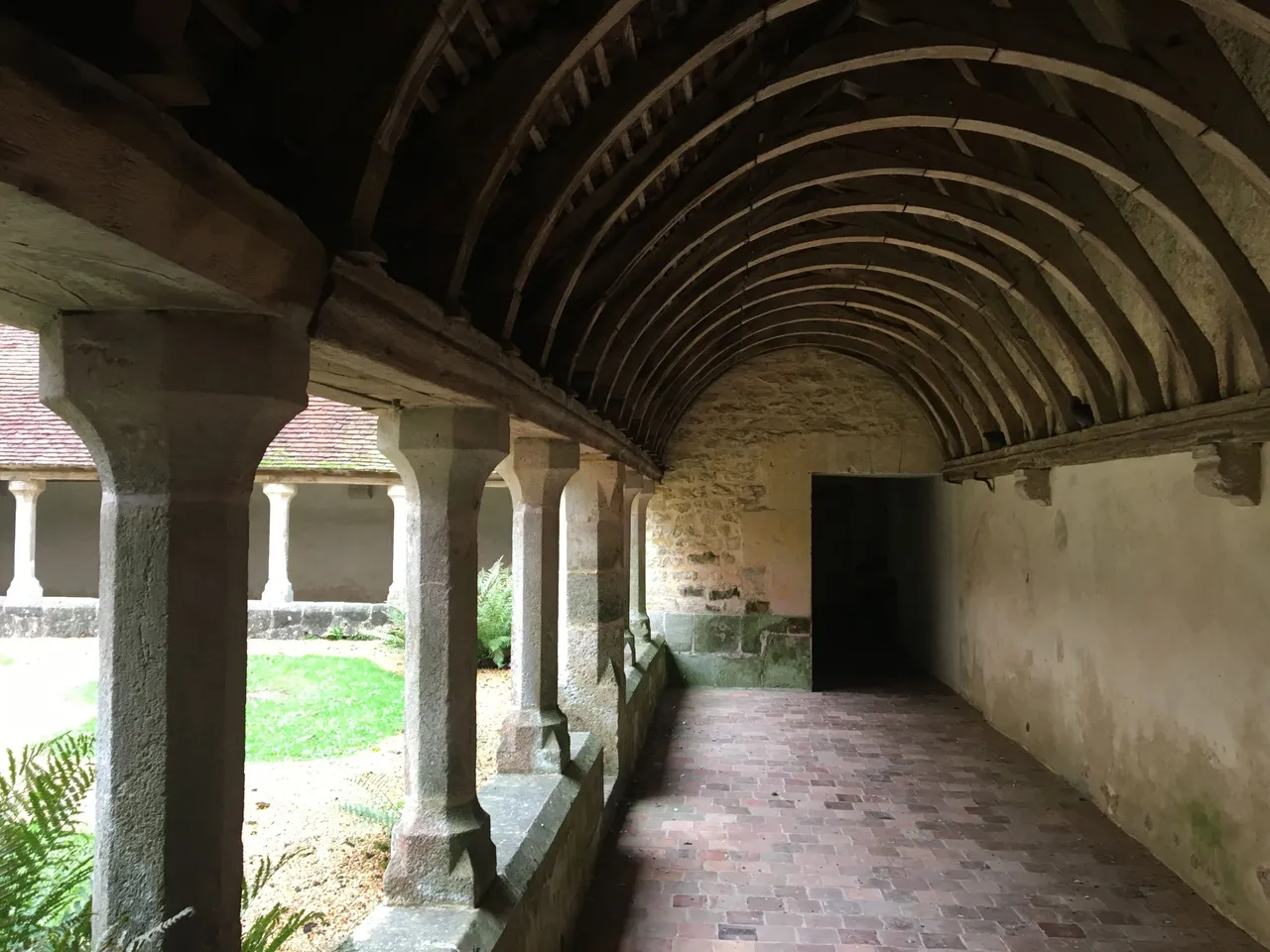

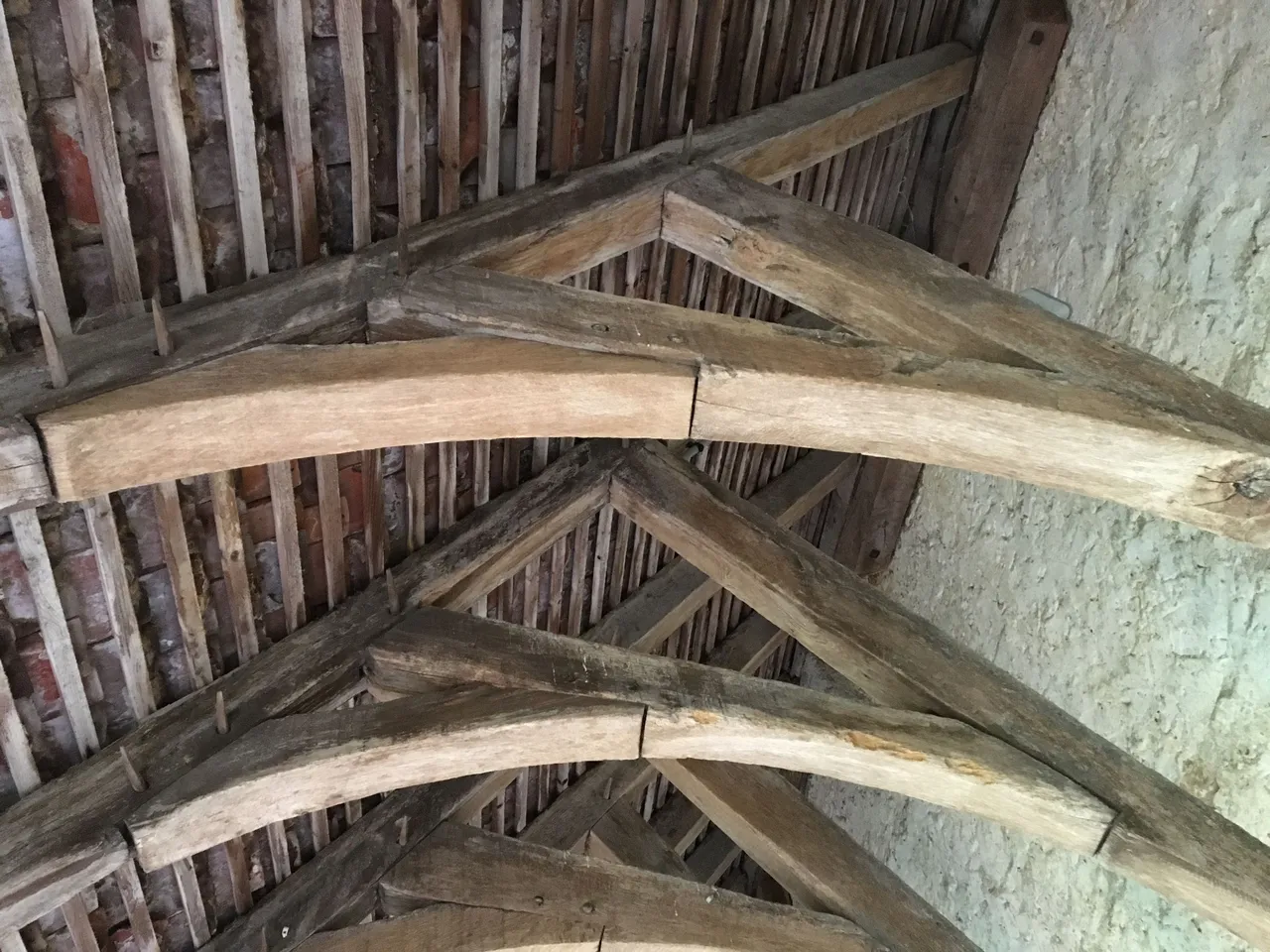
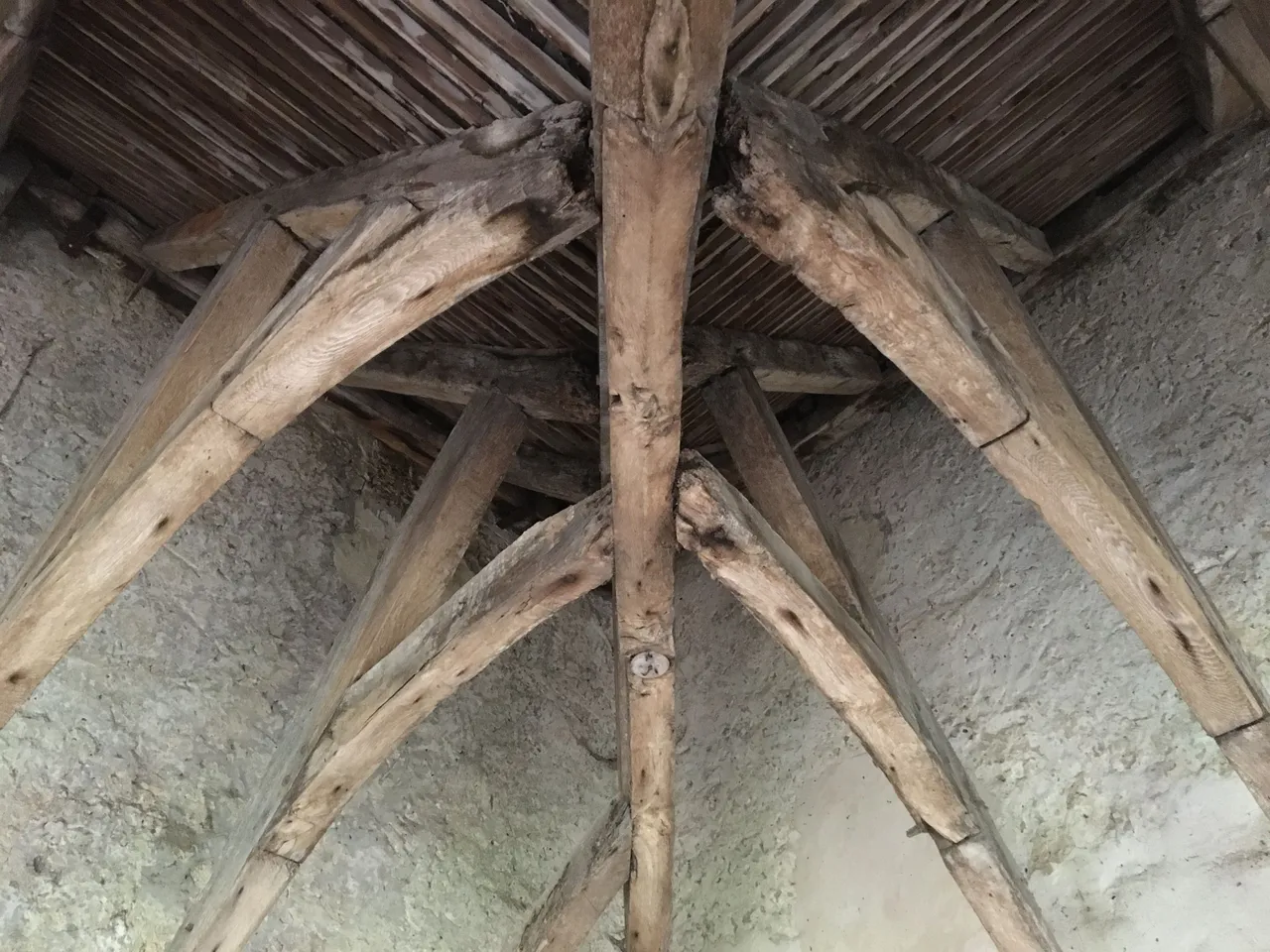
One of the parts I found the most beautiful was clearly the magnificent vaulted roof structures with their precise and complex joints...
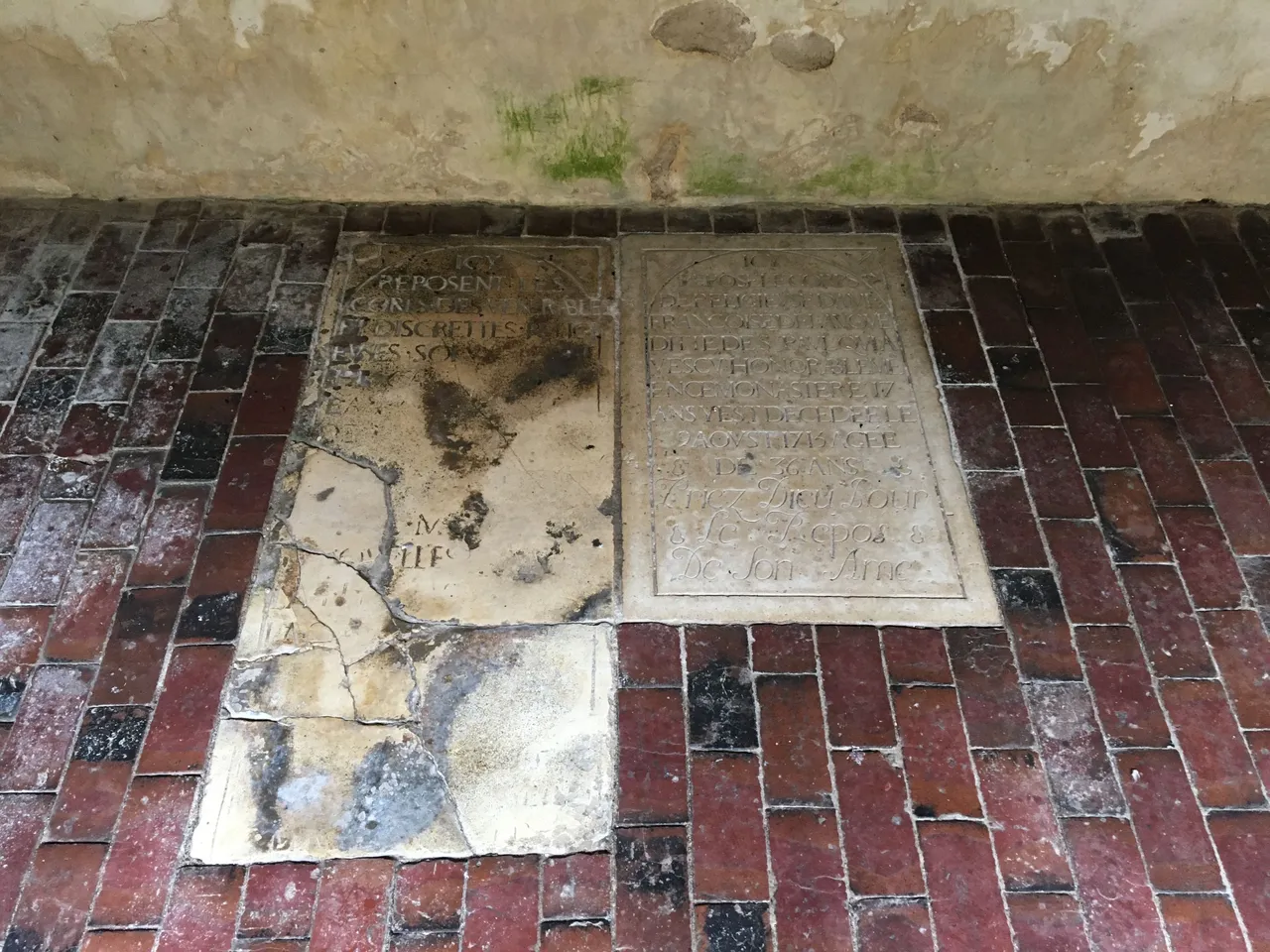
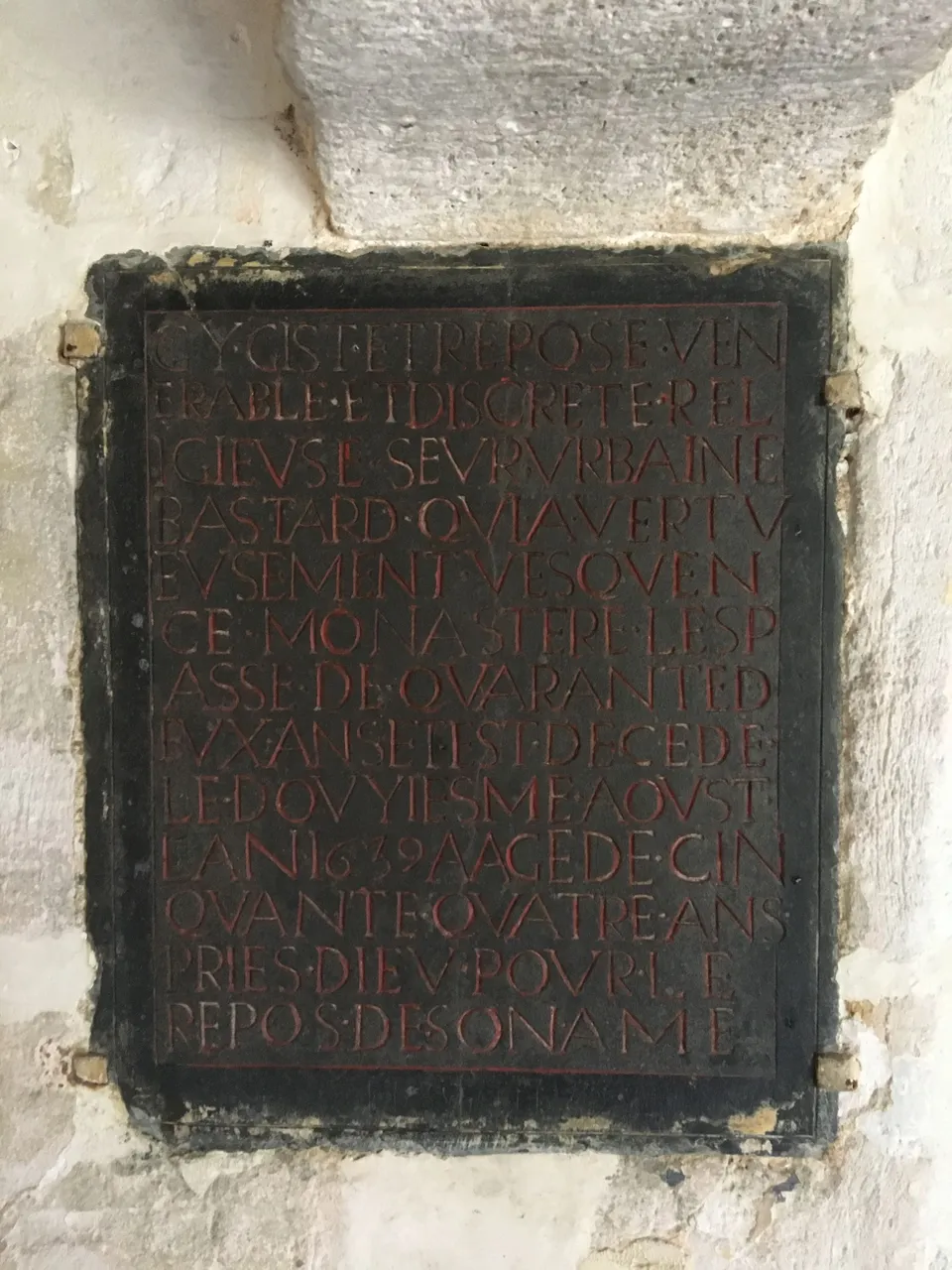
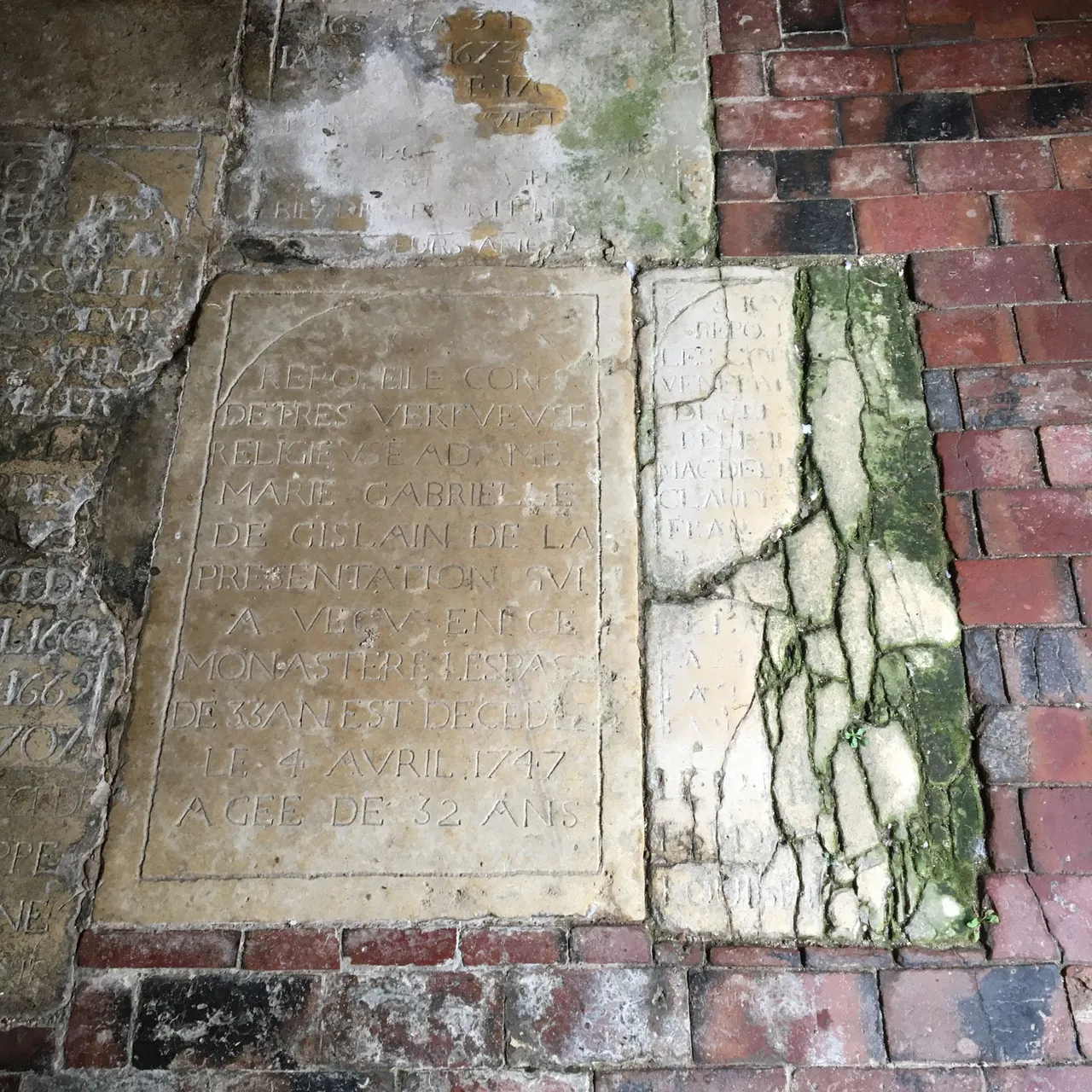
On the floor and in some places on the walls are slabs of stone smoothed by time. These are the graves of nuns who served and lived in the place at the time. It's always the material, significant details that I find most touching!
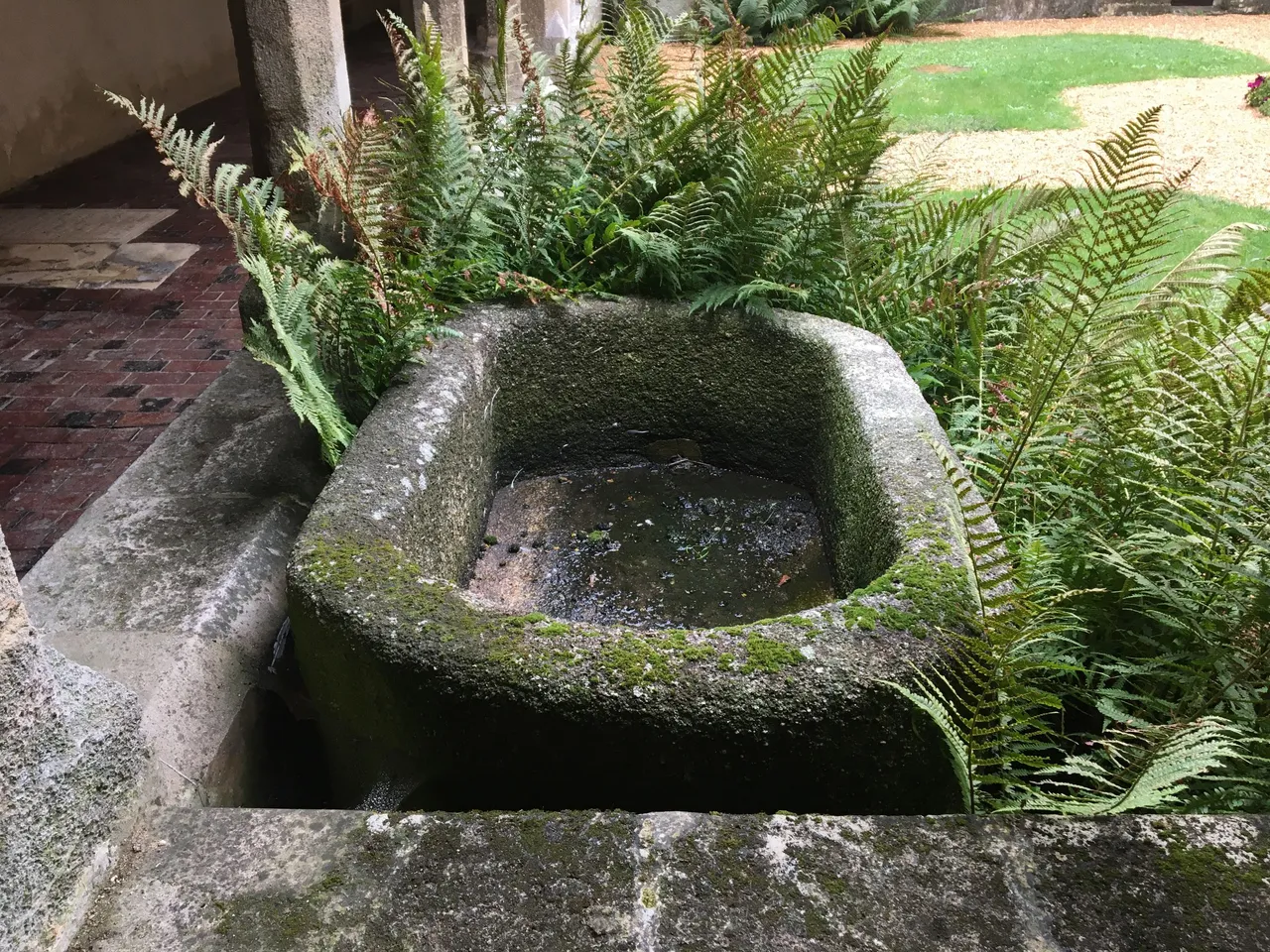
In almost every corner of this square courtyard, there are large stone basins that must have been used to collect rainwater and water the courtyard.
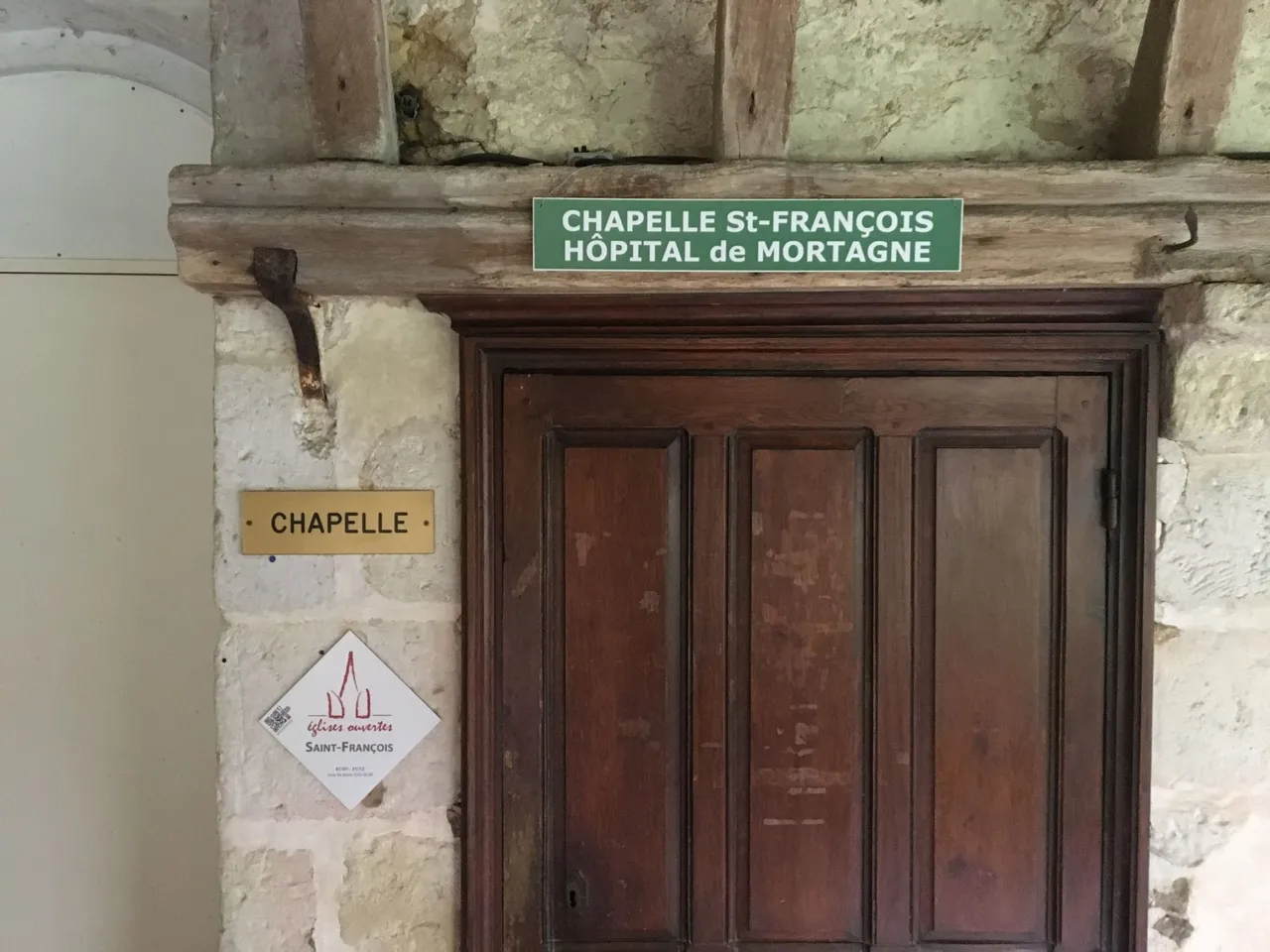
But let's move on to the little chapel, which is just as cute. A quick reminder: both sites are free to visit. But to go to Mortagne, you need to know the area or already be in the area !
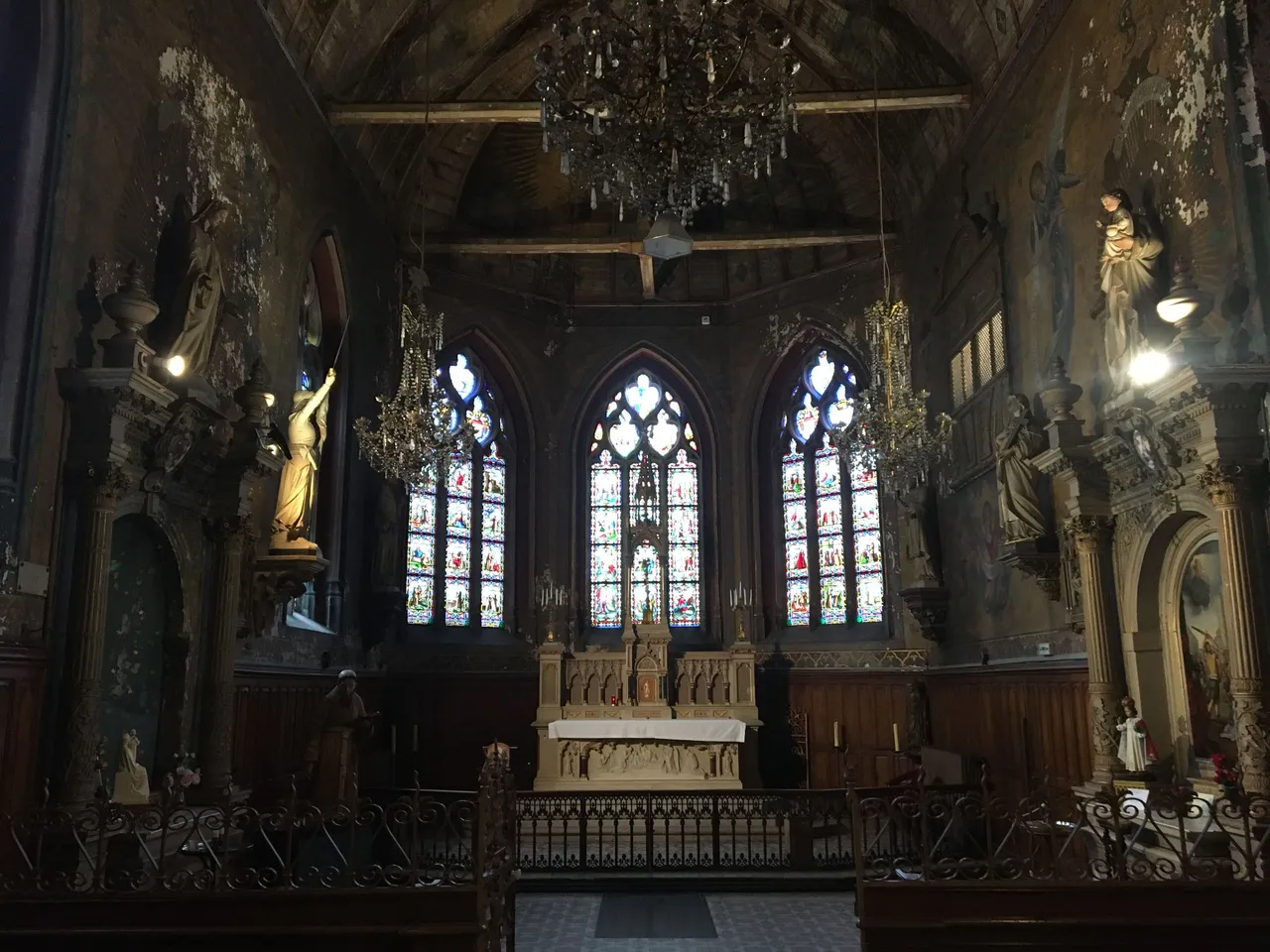
The chapel is not very large, but it is richly decorated.
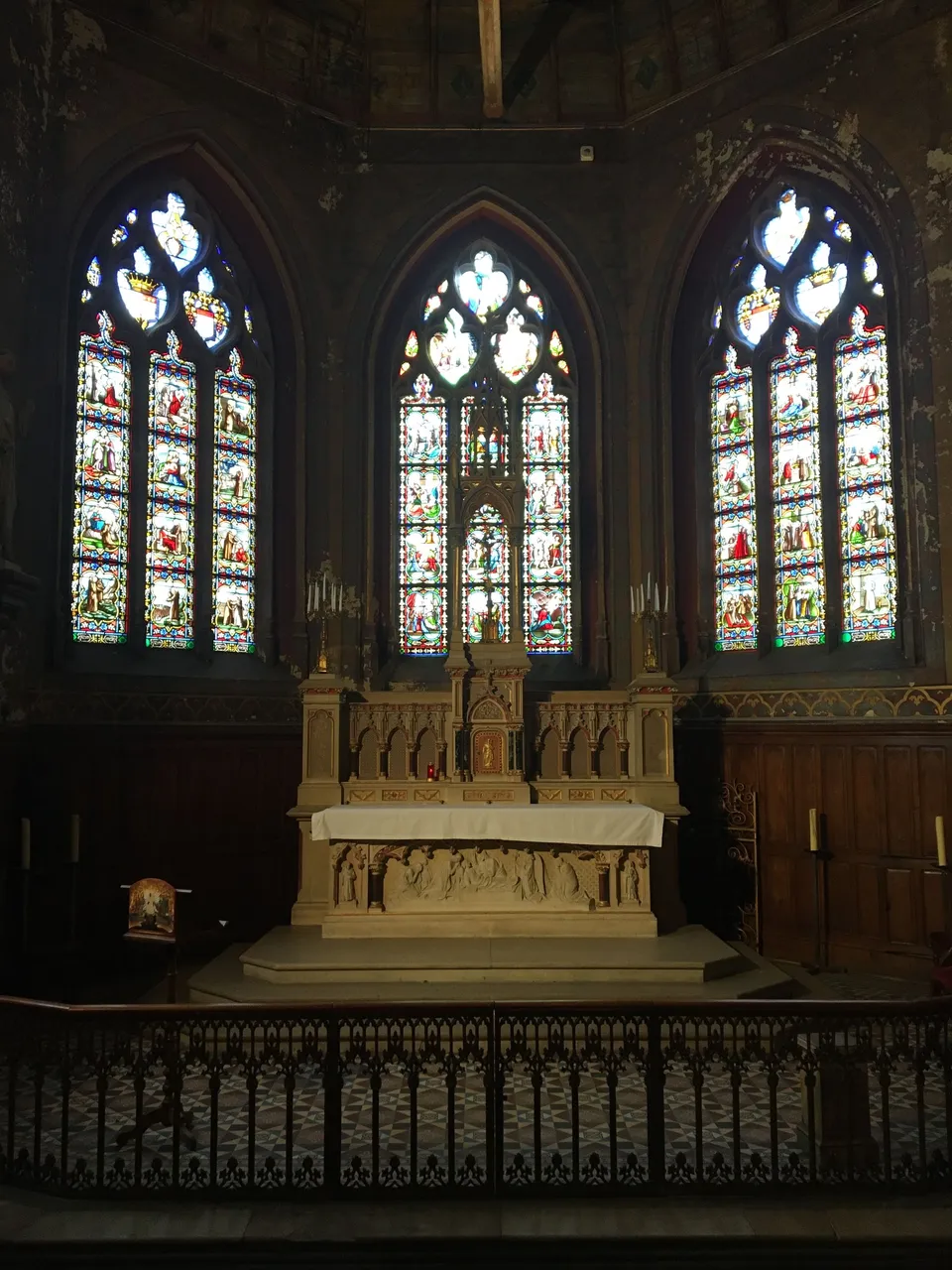
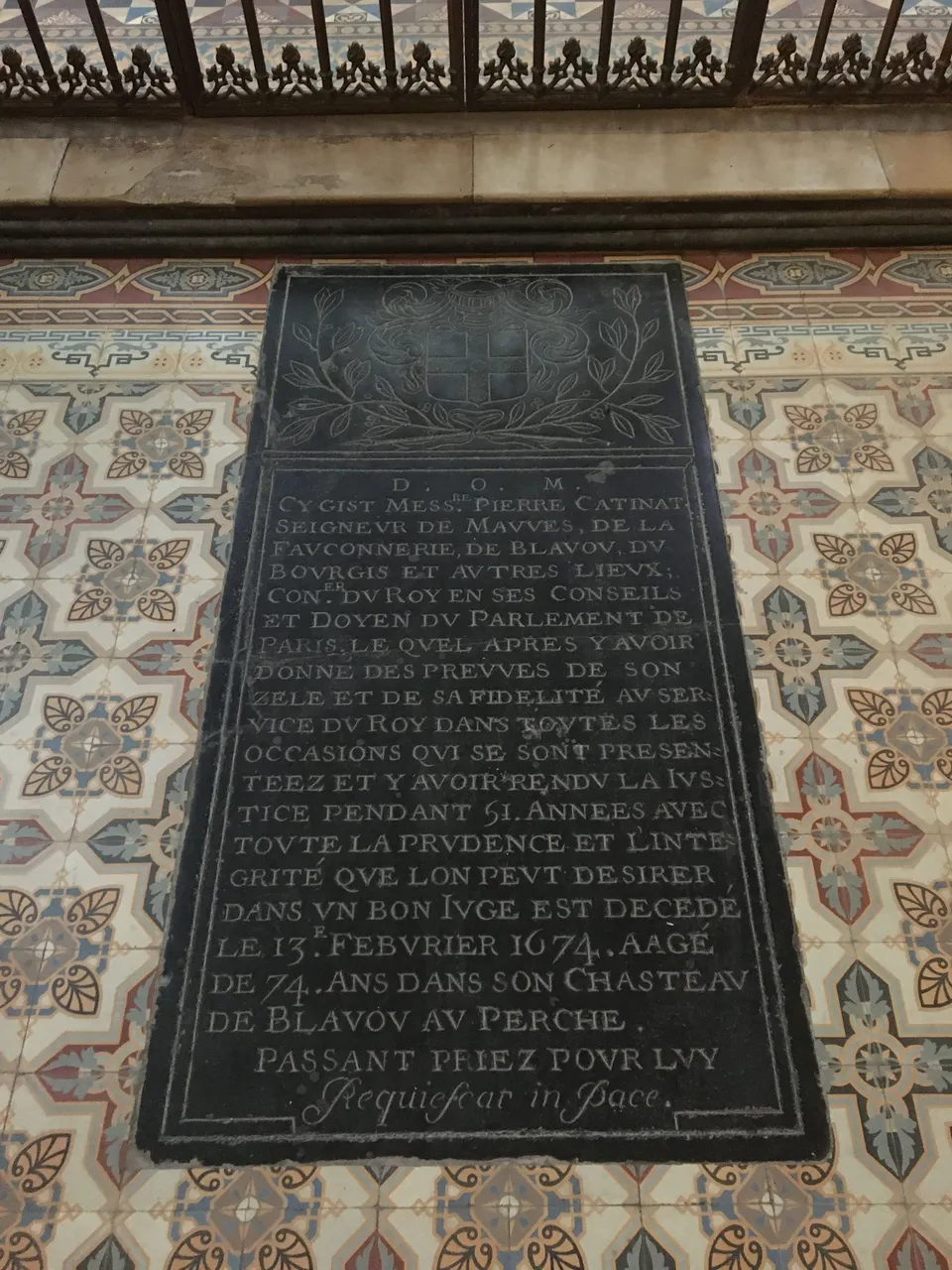
Here's a closer look at the altar and the plaque commemorating an earl and the thanks for his services to the then king.
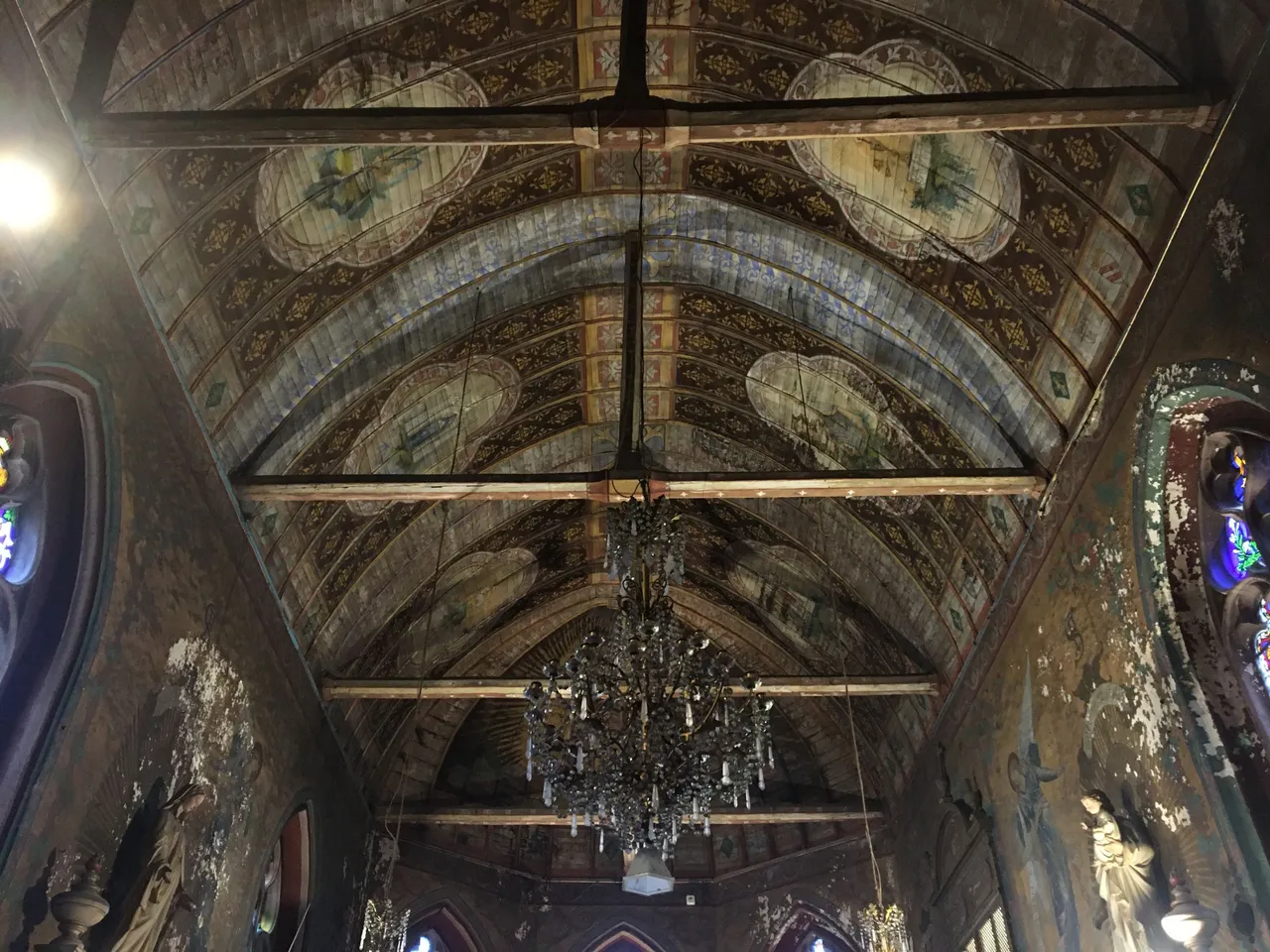
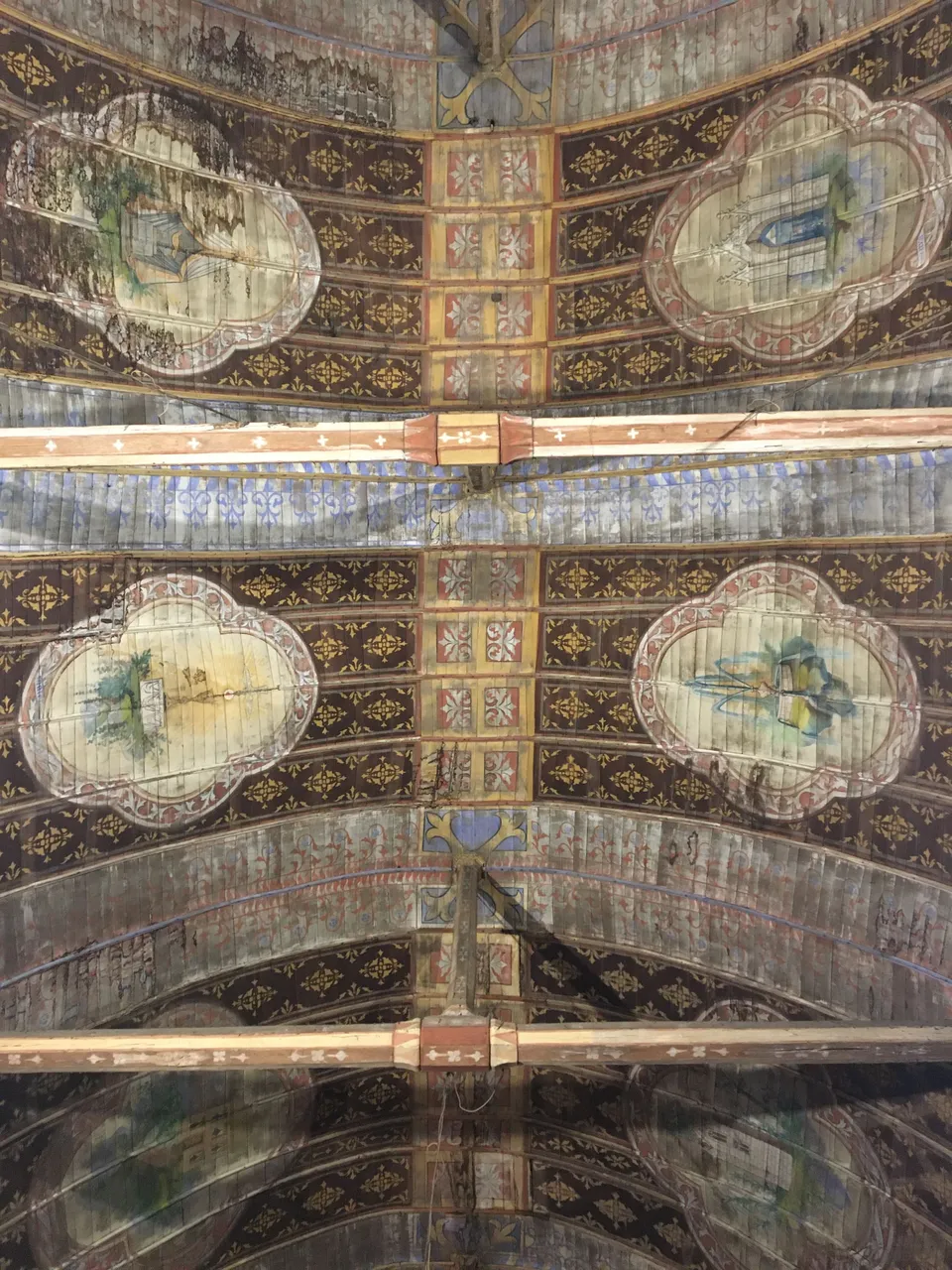
One of the special features of this chapel, which deserves to be better known, is its ceiling in Romanesque vaulting, which is entirely painted with architectural and natural motifs. This, in addition to the motifs that are repeated between the illustrations...
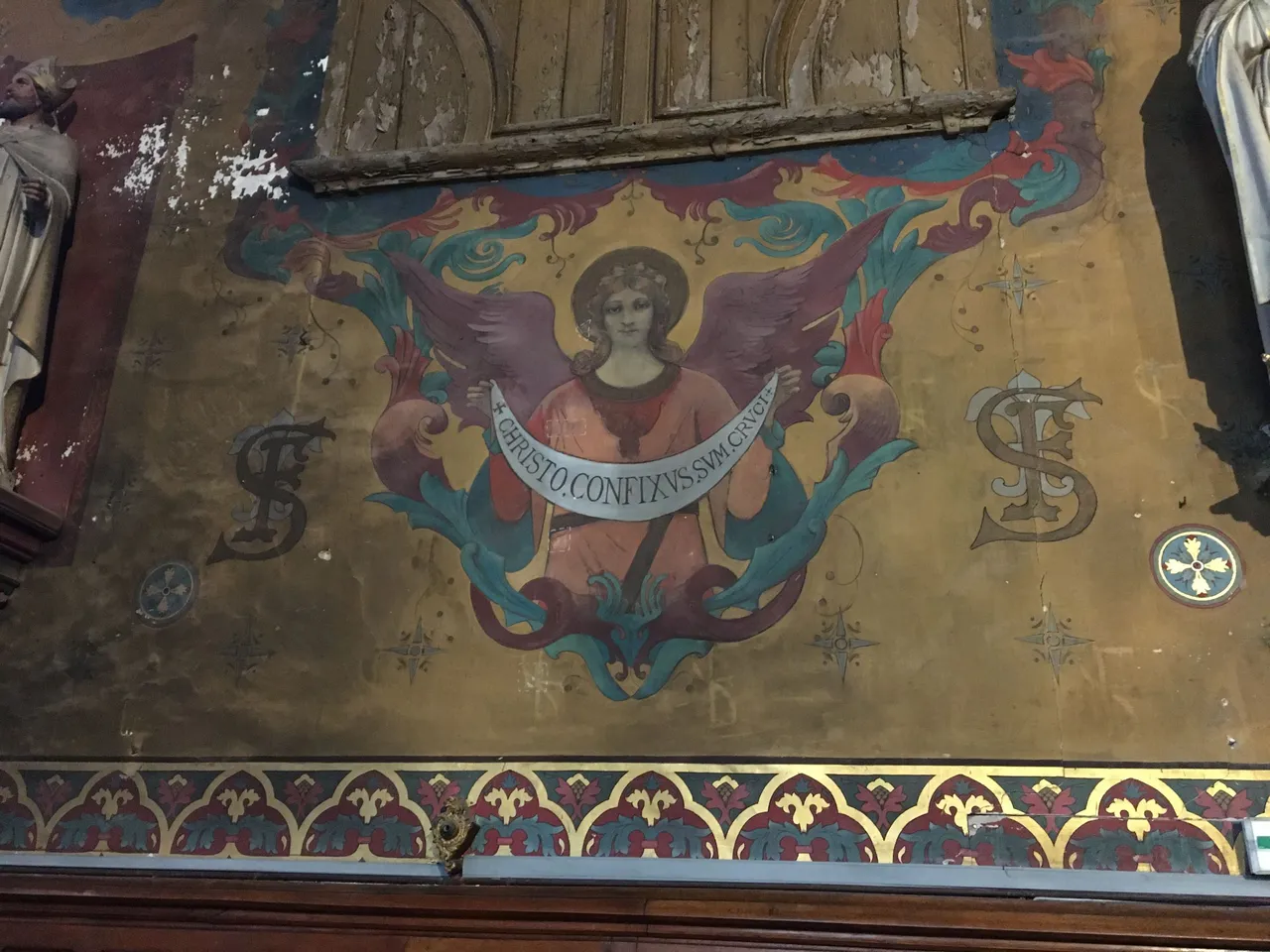
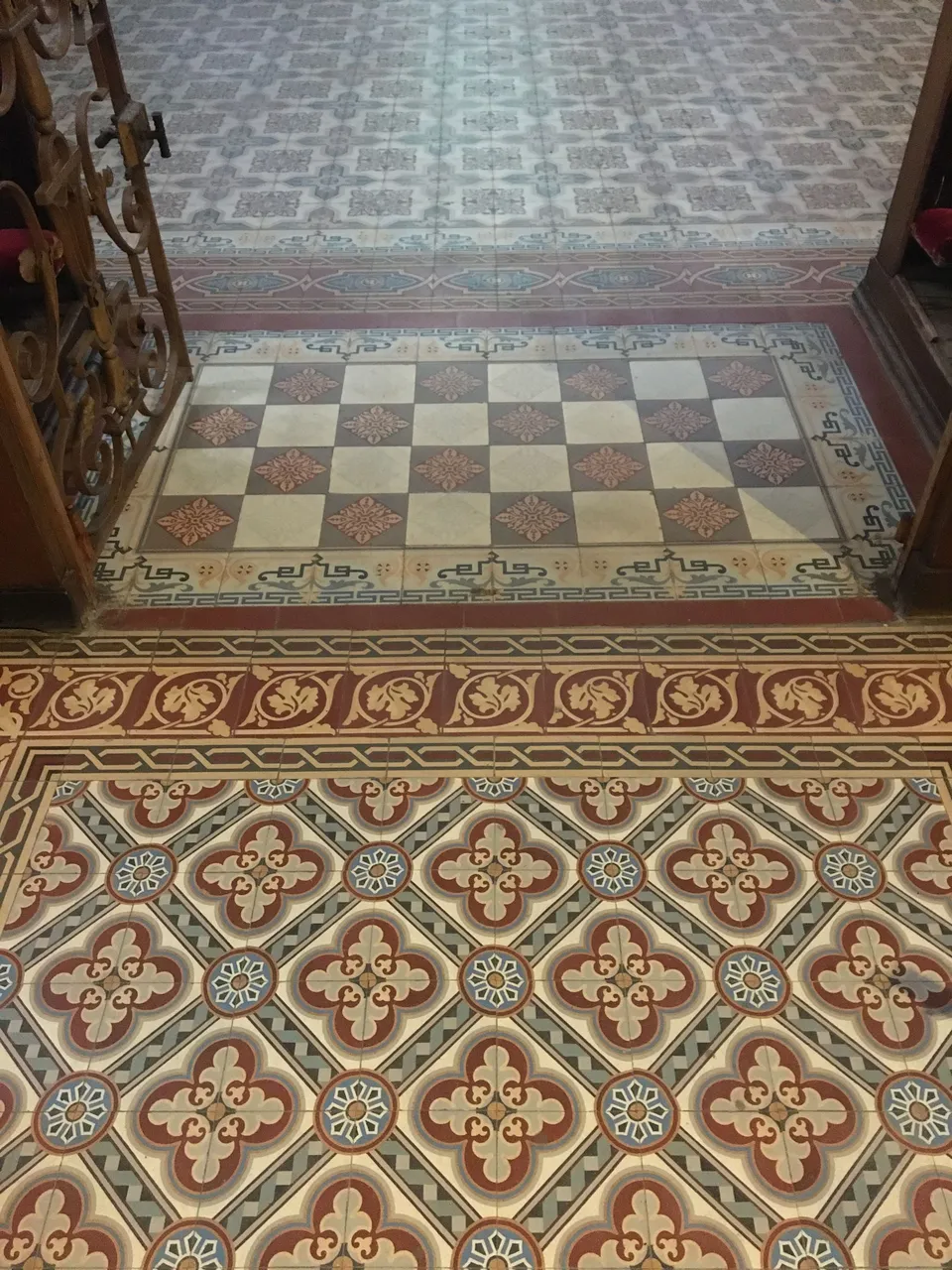
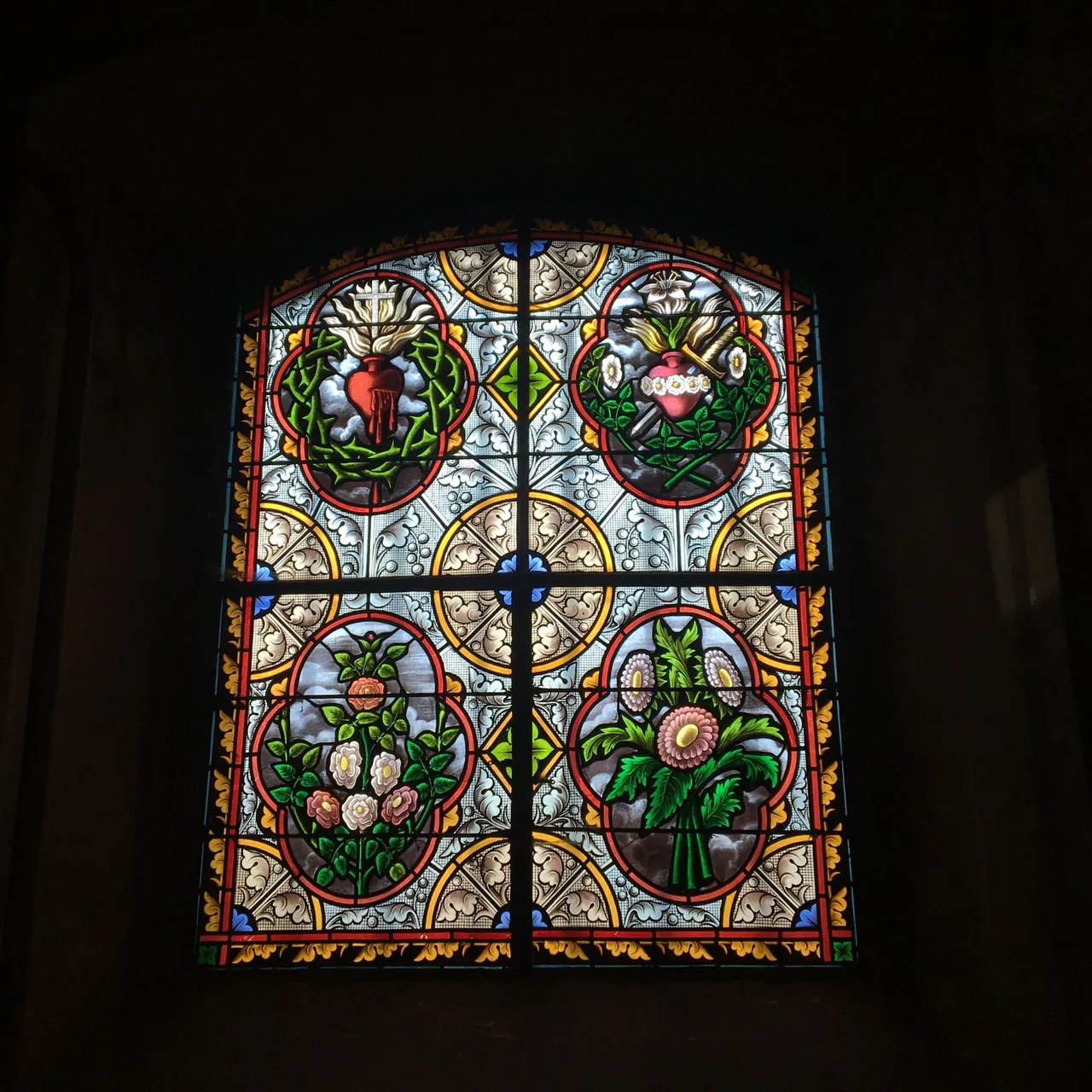
Then there are the frescoes on the walls, the superb floor tiles, and I've fallen in love with the stained glass windows, this one in particular !
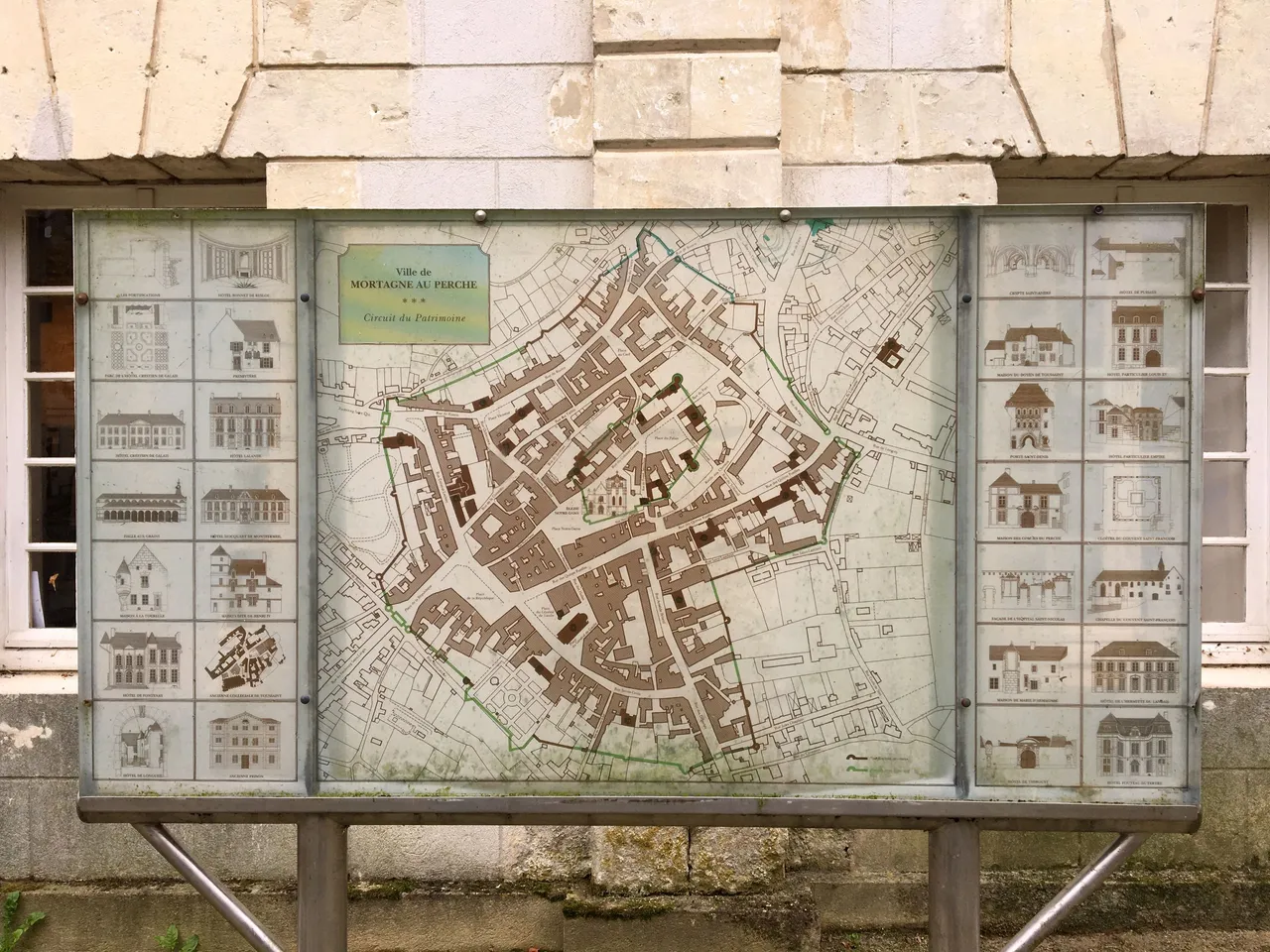
We'll finish with this map nearby to give you an idea of the city, bearing in mind that we'll probably be making a visit in the near future, which may be the subject of an article !
I hope you've enjoyed this article and this visit. Thank you for reading and I apologize again for my lack of involvement in the comments !
Take care and I hope to see you soon,
<3
Bonjour chers amis et Hivers ! J'espère que vous allez pour le mieux. Après des semaines de travail acharné et bien fatigant, le rythme se calme peu à peu... Mais tout cet "extra" risque bien de passer dans notre installation à la campagne, l'entretien et la préparation du jardin.
L'hiver est une saison propice à cela, mais nous aurons l'occasion d'en reparler, je l'espère, bientôt !
Aujourd'hui, je souhaitais partager avec vous une visite que nous avons récemment faite dans une des villes un peu plus grandes des environs, j'ai nommé : Mortagne au Perche. C'est une cité qui a sût garder son caractère et son architecture historique, les bâtiments allants du Moyen-Âge en passant jusqu'au style Empire pour arriver à notre époque moderne.

Voilà le bâtiment qui abrite le cloître et la chapelle et qui est aujourd'hui une hôpital.


Nous voilà devant l'entrée...


Ici, un peu de lecture pour les francophones, mais voici ce que j'ai pu trouver sur l'histoire du site :
En 1502, Marguerite de Lorraine (1463-1521) décide de construire un couvent à Mortagne pour des sœurs Clarisses. L’abbaye devient bien-national en 1800 pour être converti en hôpital.
De nos jours, cet unique exemple en Normandie d’une chapelle attenante à son cloître présente un exceptionnel intérêt architectural et pictural. En effet, la chapelle et le cloître n’ont pas subi de transformations majeures depuis le XVIe siècle et les décors polychromes de la chapelle St-François séduisent par leur originalité, conférant aux visiteurs de ces lieux intériorité et apaisement.
Source, "Normandie Tourisme"


Et voilà ce petit cloître, dont le carré ne fait pas plus de 15 mètres de côté. À notre arrivée, il y avait quelques infirmières de l'hôpital qui prenaient leur pause et c'est pour cela que je n'ai pas pu prendre le lieu dans sa totalité.
Mais cela ne nous a pas empêché de profiter du calme et de la quiétude du lieu...


Ici, en se penchant un peu pour voir les bâtiments qui surplombent la petite cour.




Une des parties que j'ai trouvé la plus belle, c'est clairement ces magnifiques charpentes en voûtes et aux assemblages précis et complexes...



Sur le sol et à quelques endroits des murs, on trouve des plaques de pierre lissée par le temps. Celles-ci sont des sépultures de religieuses qui ont servi et vécu dans le lieu à l'époque. C'est toujours les détails matériels et significatifs que je trouve les plus touchants !

Dans presque tous les coins de cette cour carrée, on trouve de larges bassines en pierre qui devaient servir à récupérer l'eau de pluie et à arroser la cour.

Mais passons à la petite chapelle qui est tout aussi mignonne. Petit rappel qui a son importance, les deux lieux sont en accès libre et gratuit. Mais pour aller à Mortagne, il faut connaître ou déjà être dans la région !

La chapelle n'est pas très grande, mais elle est richement décorée.


Voilà d'un peu plus près l'autel et la plaque commémorative pour un comte et les remerciements pour ses services au roi d'alors.


Une des spécificités et qui fait que cette chapelle gagne à être connue, c'est son plafond en voûte romane qui est entièrement peint de motifs architecturaux et naturels. Cela, en plus des motifs qui viennent se répéter entre les illustrations...



Dans l'ordre viennent ensuite des fresques aux murs, le carrelage qui est superbe, et mon coup de coeur pour les vitraux et celui-ci en particulier !

Nous terminerons par ce plan non loin de là qui vous permettra de vous donner une idée de la ville, tout en sachant que nous ferrons probablement une visite prochaine, qui pourra donner lieu à un article !
J'espère que vous aurez apprécié cet article et cette visite. Je vous remercie pour votre lecture et vous renouvelle mes excuses pour mon faible et inexistant engagement dans les commentaires !
Prenez bien soin de vous et à bientôt j'espère,
<3